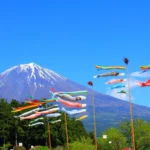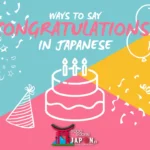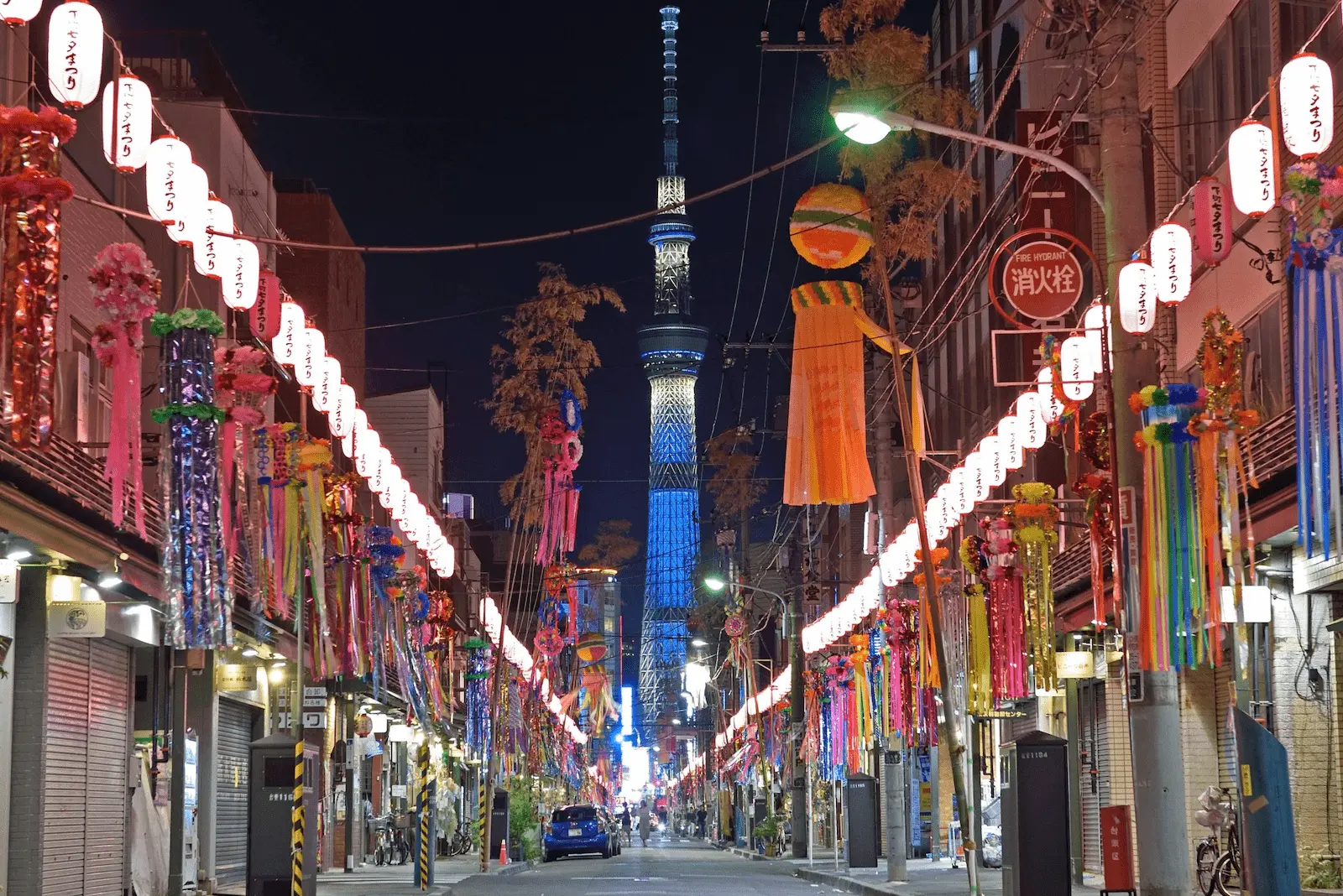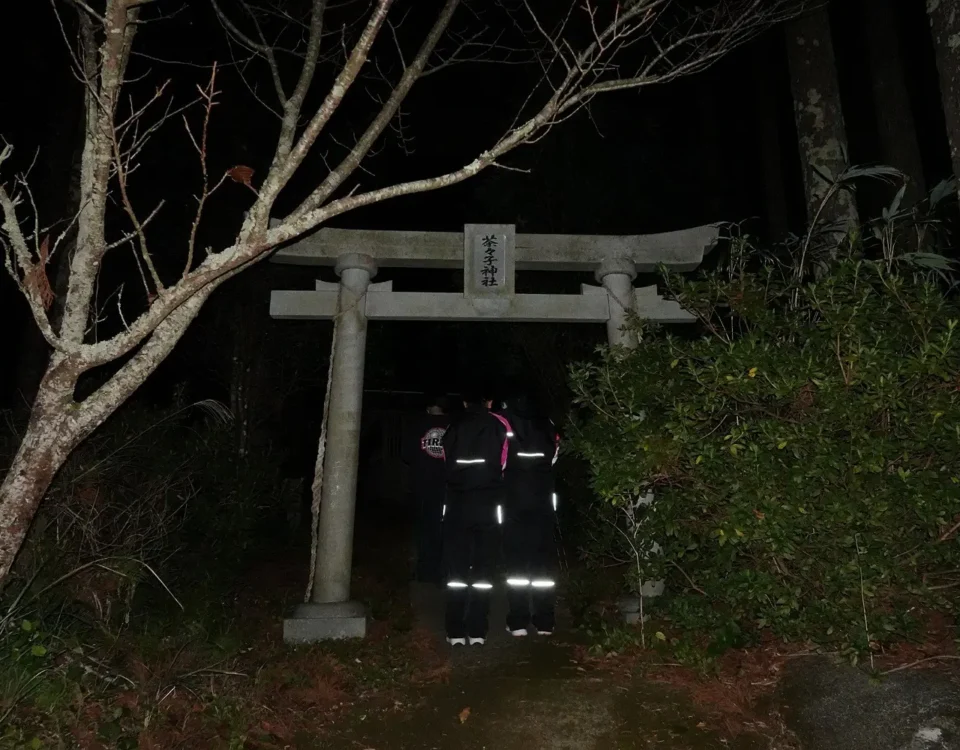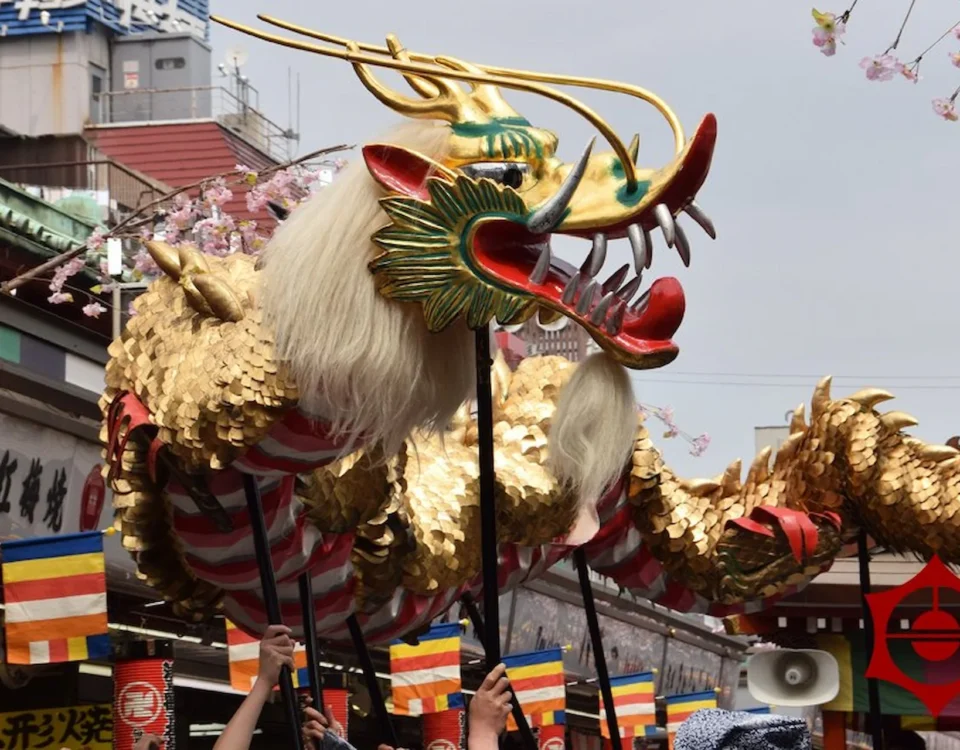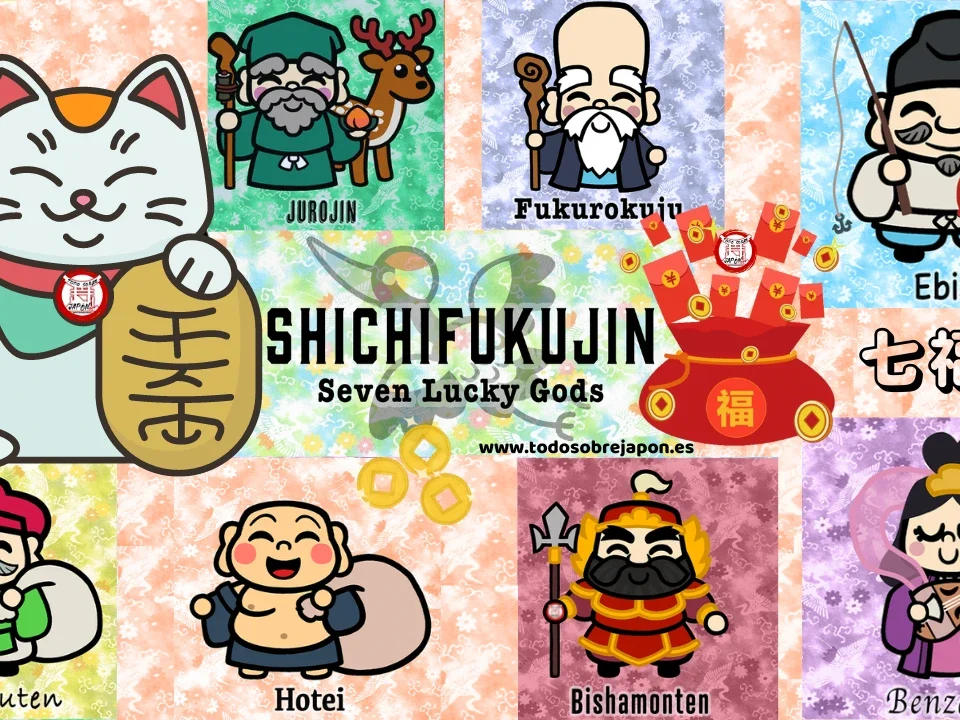The Tanabata Festival or also called tanabata matsuri, held on July 7, is a very beautiful celebration in which a large group of people, from children to adults, make wishes on strips of colored paper called tanzaku.
However, very few people know the meaning and origin of Tanabata matsuri. In this article, we will explain in detail the 3 legends of the origin of Tanabata and the meaning of Tanzaku and the decorations of this tanabata festival.
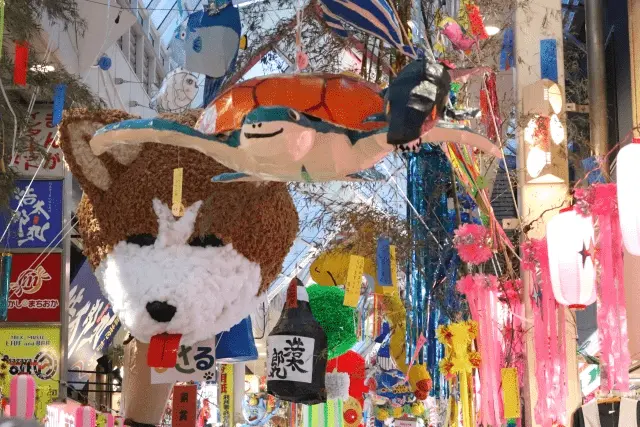
Tanabata matsuri, a festival of the Edo period
Tanabata matsuri is an annual event to honor the stars on the night of July 7. It is also one of the 5 festivals established in the Edo period.
The 5 festivals were created as official events and holidays of the time, and were abolished as an institution in 1873 (Meiji 6) when the calendar was changed to the new one. However, the following 5 festivals, centered on Tanabata matsuri, have been passed down to the present day as seasonal events in different forms.
- January 7: Jin-Jitsu no Sekku
- March 3: Joushi-no-Matsuri (Snake Festival)
- May 5: Tango no Sekku (kodomo no hi)
- July 7: Tanabata Festival or tanabata matsuri
- September 9: Chou-you no Sekku
3 customs related to the meaning and origin of Tanabata festival
Tanabata in Japan is a mixture of Japanese and Chinese traditions and customs. Among the many origins, the following 3 are the most famous are:
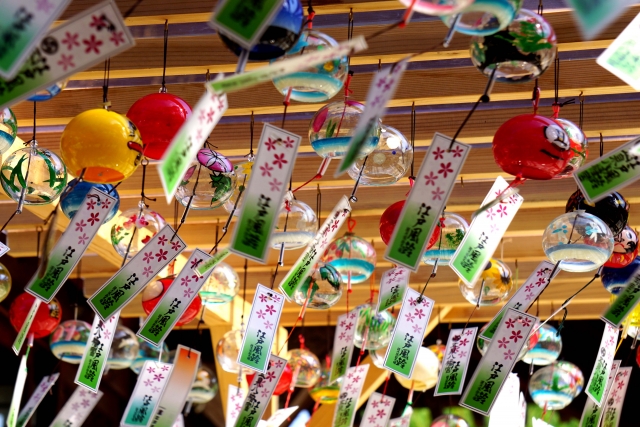
Tanabata – Tanabata tsume and the Tanabiki kimono
Tanabata is an ancient Japanese custom of praying to the god of water for a good autumn harvest.
In the past, women called tanabata tsume, and used to weave kimonos and offer them to the gods. The loom used to make the kimonos was called tanakiki. The tanaki iki ceremony came to be held on July 7 in preparation for the Obon festival.
It is said that the name Tanabiki became an acronym for Tanabata, a 5-day festival on the same day.
Tanabata legend: the legend of Orihime and Hikoboshi
The tanabata legend, a story about Orihime and Hikoboshi, also famous in Japan, has its roots in a Chinese star legend. The general synopsis is that Orihime and Hikoboshi were separated by the Milky Way when the Emperor of Heaven became angry with Orihime and Hikoboshi, who stopped working altogether after their marriage.
The emperor then allowed them to cross the Milky Way once a year, on July 7 to see each other, on the condition that they were diligent in their work.
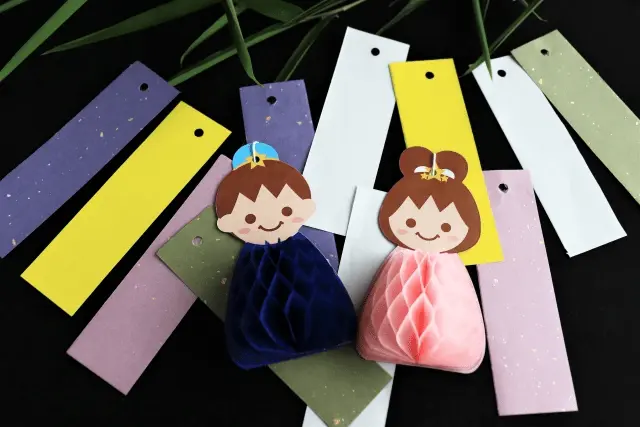
Tanabata Festival and Kikkouden (乞巧奠)
Kikkouden is a Chinese custom introduced in the Nara period (710-794). With the desire to improve sewing skills, Kikkouden spread naturally to the Japanese court, where it became a festival in which women made offerings and prayed on the night of Tanabata.
It is said that the meaning of praying for a good marriage between a man and a woman was also added to Kikkouden, which was introduced along with the legend of Orihime and Hikoboshi.
The tanzaku colored strips – Tanzaku tanabata
Tanabata decorations, such as tanzaku coloes strips, also have various meanings and origins.
Five-color paper strips: Tanzaku tanabata
The 5-color paper strips decorated for the Tanabata festival have their origin in the Chinese theory of Yin-Yang and the 5 elements. According to this theory, the world is made up of yin and yang, and the colors used in the paper strips have the following meanings:
Tanzaku blue and green: The blue and green paper strips representing nature, wood.
Tanzaku red: The red strips or “fire” representing flames.
Tanzaku yellow: The yellow strips representing the “earth”, symbol of the earth.
Tanzaku white: The white strips or “gold” representing the metal buried in the earth
Tanzaku purple and black: The black and purple strips or “water” representing the nourishment of life.
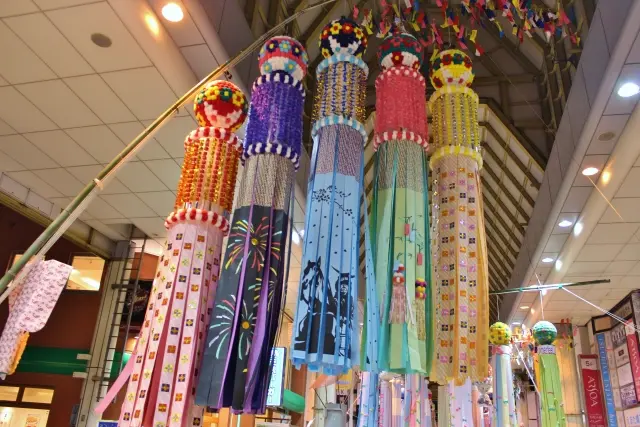
The colors of the paper strips also have the meaning of the 5 virtues on which the Chinese thinker Confucius was based.
Tanzaku or blue or green paper strips: ‘Jin’, compassion for others.
Tanzaku or red strips: ‘Rei’, gratitude, which is the embodiment of 仁.
Tanzaku or yellow strips: ‘faith’ in sincerity and keeping one’s word.
Tanzaku or white strips: righteousness, which is not based on self-interest.
Tanzaku or black and purple strips: “wisdom” to study hard and improve.
Blowing streamers for the tanabata legend: Orihime and Hikoboshi
These serpentine ornaments are derived from the legend of Orihime and Hikoboshi. The threads used by Orihime are depicted with paper or cloth. It is said that the blown streamers are intended to desire an improvement in sewing and weaving.
If a colored blowtorch is made with the same 5 colors we said of tanzaku, it is also said to ward off evil spirits.
A thousand paper cranes at the tanabata festival
The crane is a bird that symbolizes longevity, as the saying goes, “A crane lives a thousand years, a turtle ten thousand years.” In the past, people had a very short life span, so it is believed that they wished a long life to their elders by doubling a thousand cranes. The mating pair of cranes is also a symbol of marital bliss, as they get along very well.

Paper garments (kamiko) and tanabata
Kamiko are kimono-shaped decorations made of Japanese paper or origami. It is said that the purpose of including paper garments in Tanabata decorations is to wish women success in weaving, just like fukiage.
When looms were in common use, paper garments were as famous as tanzaku (paper strips). Paper garments, which also look like human figures, are also intended to wish children healthy growth.
Kinchaku (purse bag) at tanabata festival
The kinchaku, which is shaped like a purse, is an ornament that signifies good luck with money at the tanabata festival.
In addition to bringing a lot of money, it also has the purpose of wishing good savings.
Yellow, which brings good luck with money, is often used for kinchaku tanabata decorations. Some people decorate real bags instead of origami kinchaku.
Conclusion of tanabata matsuri
Tanabata, famous for the story of Orihime and Hikoboshi, was a mixture of Japanese and Chinese customs and traditions. When preparing for Tanabata before July 7, it is best to know these meanings and origins in order to make everyone’s wishes come true and prepare colorful tanzaku.
– When you go on a trip what we like most as travelers is to have the best possible experiences, so these activities that I show you below, can be the best experiences you will have on your trip to JAPAN.

